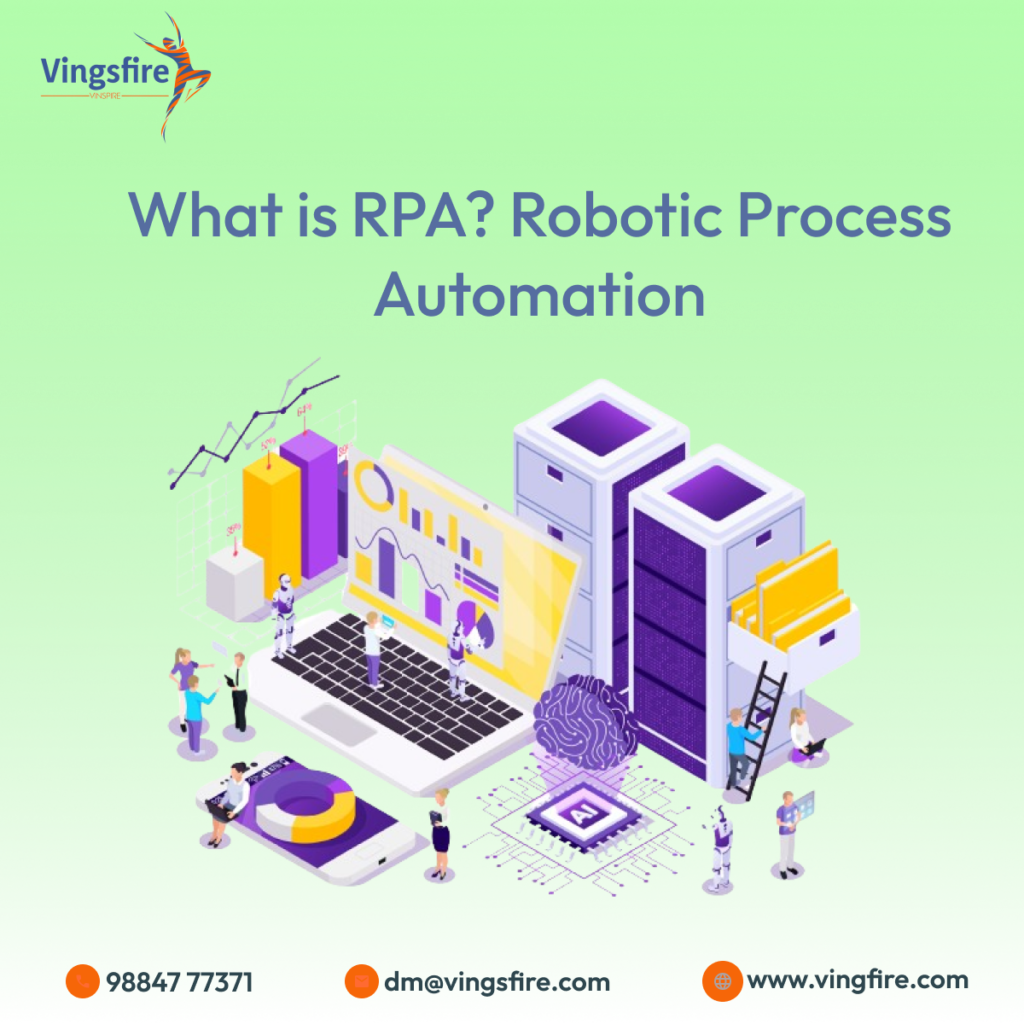Introduction:
In the ever-evolving landscape of technology, businesses are constantly seeking innovative solutions to enhance efficiency and streamline their operations. Robotic Process Automation (RPA) has emerged as a game-changer in this regard, revolutionizing the way tasks are performed across various industries. In this comprehensive blog post, we will delve into the intricacies of RPA, exploring its definition, applications, benefits, and the impact it has on businesses.
What is Robotic Process Automation (RPA)?
Robotic Process Automation, commonly known as RPA, is a cutting-edge technology that employs software robots or “bots” to automate repetitive and rule-based tasks previously carried out by humans. These bots mimic the actions of a human user interacting with digital systems, such as software applications, databases, and more, to execute tasks with precision and speed. RPA is not about physical robots but rather about the automation of mundane and repetitive digital tasks, liberating human resources to focus on more strategic and creative endeavors.
Key Components of RPA:
Bots: The fundamental building blocks of RPA, bots are software programs designed to emulate human actions. They can be configured to perform a wide range of tasks, from data entry and processing to complex decision-making processes.
Process Definition: RPA relies on well-defined processes. Before automation, it’s crucial to map out the workflow, identify repetitive tasks, and understand the rules governing each process.
Automation Script: Once the processes are defined, automation scripts are created to instruct the bots on how to perform the tasks. These scripts are usually created through a user-friendly interface, making it accessible for non-technical users to participate in the automation process.
Applications of RPA:
RPA finds applications across various industries and business functions, transforming the way tasks are executed. Some common applications include:
Data Entry and Migration: RPA can be employed to automate data entry tasks, ensuring accuracy and efficiency. It is also useful in data migration projects, seamlessly transferring data from one system to another.
Customer Service: Bots can handle routine customer service queries, providing instant responses and freeing up human agents to focus on more complex customer issues.
Finance and Accounting: RPA is extensively used in financial processes, such as invoice processing, reconciliation, and report generation. It ensures accuracy and compliance with regulatory standards.
Human Resources: RPA can streamline HR processes, including employee onboarding, payroll processing, and benefits administration, allowing HR professionals to concentrate on strategic initiatives.
Benefits of RPA:
Improved Efficiency: By automating repetitive tasks, RPA significantly enhances operational efficiency, reducing the time and effort required for manual work.
Cost Savings: RPA reduces labor costs associated with repetitive tasks, allowing organizations to allocate resources more strategically and achieve cost savings in the long run.
Accuracy and Compliance: Bots perform tasks with unparalleled accuracy, minimizing errors and ensuring compliance with regulatory standards. This is particularly crucial in industries with strict compliance requirements.
Scalability: RPA can easily adapt to changing workloads, making it a scalable solution for businesses of all sizes. As the volume of tasks increases, additional bots can be deployed to meet the demand.
Impact on Businesses:
The adoption of RPA is reshaping the business landscape, bringing about transformative changes:
Increased Productivity: RPA allows employees to focus on high-value tasks, fostering a more productive and motivated workforce.
Enhanced Customer Experience: By automating customer service processes, businesses can provide quicker responses, leading to improved customer satisfaction.
Strategic Decision-Making: With routine tasks automated, organizations can allocate more time and resources to strategic decision-making, driving innovation and growth.
Competitive Advantage: Early adopters of RPA gain a competitive edge by optimizing processes, reducing costs, and delivering superior services.
Conclusion:
In conclusion, Robotic Process Automation is a pivotal technology that empowers businesses to thrive in the digital era. By automating repetitive tasks, organizations can unlock new levels of efficiency, productivity, and innovation. Embracing RPA is not just a technological shift; it is a strategic imperative for businesses aiming to stay ahead in an increasingly competitive landscape. As the world continues to evolve, the role of RPA in shaping the future of work is only set to expand, bringing about a new era of unprecedented possibilities.






